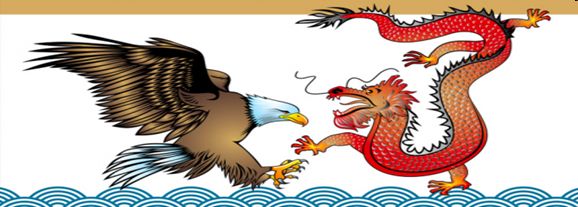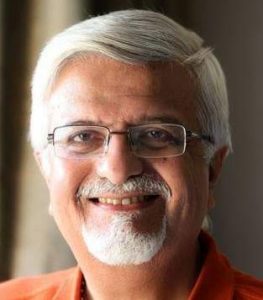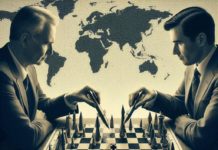By J Mulraj
Oct 17-23, 2021
The transition from fossil fuel to renewables isn’t an easy one
In the race for global supremacy, we are seeing an enfeebled America, symbolised by the Eagle, with weak leadership, and too over-leveraged to make the investments necessary to gain supremacy, fighting off an aggressive China, symbolised by the dragon, with a wolf-warrior leadership, and financial heft despite also being leveraged.
China is, verily, an enigma. After the opening up of its economy, under Chairman Deng Xioping, who cared not if the cat was white or black, so long as it caught mice, the Chinese economy grew strongly, lifting millions out of poverty. Strong GDP growth, sometimes double digit, allowed it to gain financial muscle, enough wealth to make superb infrastructure (like the longest network of high speed trains in the world), launch the Belt & Road Initiative (BRI), the biggest global infrastructure effort, become an essential part of the global manufacturing supply chain (it has 1 billion tonnes per annum steel capacity, the world’s largest, compared to 142 m t in India; the world’s largest cement capacity at 3800 Mta among others).
China used these capacities at home, to build roads and housing, anticipating demand, and abroad, as a part of the BRI, cleverly using unutilised capacity in infrastructure of aided companies, and funding its purchase.
The wealth was also used by China to gain a technology edge in several of the new technologies that will drive the 4th industrial revolution. The effort was a planned one, outlined in its Made in China 2025 Plan, which focused on gaining independence in 10 selected industries. It is, for example, a world leader in face and voice recognition, and has advanced knowledge in robotics, AI, IoT, semiconductor chips, and others.
These are some of the achievements of China! But China is an enigma, and has a flip side.
Like its blasé approach to environmental concerns, despite committing to becoming carbon neutral by 2060. As per this analysis by Gavekal, one of the leading independent providers of global investment research, 70% of China’s electricity, is generated from coal (under 50% for India). The black carbon soot thus generated is blown by winds and some of it settles on the Snow and ice fields of Northern Canada, becoming more absorbent of sunlight and causing them to melt.
As per the Gavekal report, even as the developed world reduced its coal fired electricity generation capacity by 17 GW last year, China increased its coal fired capacity by 29.8 GW. This offset, by a wide margin, the efforts of the developed world, to reduce carbon emissions. One GW is enough electricity to meet the power needs of 700,000 people.
Or, in its quest for soybean (used as feed for pigs), it’s destruction of huge swathes of Brazil’s Amazon forest (hear podcast). China has financed, under BRI, the construction of a railroad, in the heart of the Amazon forest, and has felled trees to clear land to grow it. It buys 70-80% of its soy from Brazil. The destruction of the Amazon is a major contributor to climate change. Ironically, China is facing the impact of it, in several floods and landslides. Perhaps it is karma.
Or, in its quest for fish, it sends our armadas of industrial boats, invading the waters of other nations. As per the article, it sent 700 industrial boats to North Korean waters, and used up 7% of the stock of squid. Tragically, the Korean fisherman, desperately in search fr fish, ventured further off to sea, ultimately washing of the coast of Japan in as emaciated, starved condition. That is not only criminal, but inhuman.
Everyone believes that a transition away from fossil fuel energy, to renewable energy supply, would be good for the environment. A part of this transition is the move away from ICE (Internal Combustion Engine) vehicles driven by fossil fuels, to an EV (electric vehicle) infrastructure. An interesting analysis made by Gavekal is about the concentration of key materials required for ICE and by EV. Whilst the top three oil producers control 39% of the oil-supply, the top 3 lithium producers (required for EV) control 80% of its supply! China controls 60% of the rare earths needed for wind generation, and the Democratic Republic of Congo (not the friendliest of countries) controls 70% of the cobalt needed for EV batteries. So the energy transition will likely take some time, and tweaks.
China’s, along with India’s, dependency on thermal coal has driven up its price, thus increasing the cost of electricity. China faces a severe shortage of coal, thus of electricity, particularly worrying as winter approaches, and which also cuts industrial output. And, with it, the supply of goods, including Christmas gifts. Other than production bottlenecks, the world faces logistical bottlenecks. Ships are unable to quickly offload cargo and turnaround is slower.
China’s GDP grew at only 4.8% in the Sept quarter, thanks to power shortages, logistical issues, plus the slowdown in real estate sector, accounting for 29% of its GDP, as evidenced by the problems at Evergrande. As per this video, a whopping 82% of Chinese bonds with an investment grade rating defaulted last year (watch @3:54).
Brent crude has risen to $84/barrel. Given the rise in energy cost, supply side bottlenecks hitting global trade, and excess liquidity pumped in by Central bankers, inflation is bound to go up. The chief economist at the Bank of England expects UK inflation to be at 5% early next year, and a decision on raising interest rates will be taken in its November meeting.
Last week the Sensex closed at 60,821, down 484 points over the week.
Investors should look out for inflation trends, and whether Bank of England will, in its November meeting, raise interest rates. Jerome Powell may then follow and raise US interest rates.











































COMMENTS